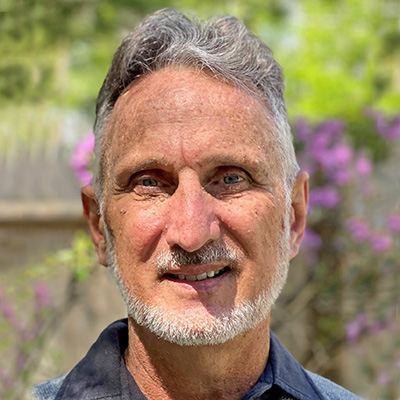
Joe Carella
An Interview with Joe Carella
Executive Director, Scandinavian Living Center, Newton, MA
The Scandinavian Living Center (SLC), located in Newton, Massachusetts, is a nonprofit assisted living community that takes an inspired approach to elder care. By adopting core Scandinavian principles, they have created a community where individuals from all cultures and backgrounds can lead connected, fulfilling lives. Joe Carella, the Executive Director, shares his thoughts on the impact that COVID-19 had on this special community.
How did you bring community into the Scandinavian Living Center prior to the COVID pandemic?
Before COVID-19 required us to physically isolate residents and staff from our community neighbors, we had over two thousand visitors connect here each month (not including family and friends of residents), over 40 organizations used our building as their gathering place, and the Scandinavian Cultural Center, embedded inside the SLC, was flourishing.
The community-centered living approach to nurturing a life enhancing sense of community in any city or town starts with defining your locality’s need for gathering space. Community-centered living is not a cookie cutter, one size fits all approach. The SLC was built with the desire to create an inviting environment that encourages neighbors of all ages and backgrounds to come together and enjoy each other’s company. The City of Newton became the community that enjoys living and participating at the SLC.
Yes, a “beautiful building” may be appealing to look at, but without space to gather it is just an isolated structure in the middle of a busy city or town. The SLC’ s gathering spaces are both large and small and are able to accommodate a variety of social gathering opportunities. Over the past twenty years, neighbors of all ages have discovered our spaces and the benefit of joining our community. Our success is defined by the fact that people have no idea that they are inside an assisted living community. What is most important is to continue making connections with people of all ages. It is the powerful opposite of isolation and loneliness.
What was the Impact of the pandemic on your community?
Overnight, we went from being embraced by our neighbors on a daily basis to total isolation and separation from them. When the pandemic hit, our building became that “beautiful building” in the middle of a busy city, but very isolated. The impact on us was almost immediate. The residents who did not understand the value of seeing their neighbors on a regular basis suddenly realized the emptiness and loneliness. The staff felt the isolation and disconnection from our wider community, and this isolation continued daily. I believe the COVID pandemic shined a light on the importance and constant need for social interaction. The isolation became a metaphor for what is wrong in our long-term housing industry. Our experience of isolation made the importance of human connectiveness dramatically clear. We now see the impact that community-centered living has in all types of housing because it facilitates healthy interactions, especially when it includes the most vulnerable. The gathering of neighbors inside any housing environment becomes a natural oversight and protection for everyone.
How did you reach 100% vaccination participation?
After months of crawling out of the COVID hole of isolation, getting the vaccine seemed a simple step and a necessary reality. Shortly after reaching 100% COVID vaccination participation (resident and staff), state officials told us that we were the only assisted living community to achieve 100% participation.
Did we feel that our community-centered living philosophy impacted our success rate; the answer is yes and no. In our case, there was a mix of emotions when it came to the COVID-19 vaccination. For some, eliminating the isolation and bringing back the entire community sooner was a motivator. For most, protecting the vulnerable population that we care for inside and outside the SLC was important. And, for some they were nervous and a bit untrusting based on mixed messages about the vaccination. We realized that the leadership and education alone were not enough. In addition, we reached out to the “informal leaders” the staff trusted and convinced them to be the first to get the vaccine, “to be an example” for those hesitating. Others who said they would never take the vaccine, or wanted to wait, were encouraged to speak to their “trusted” primary physician. We discovered that this was a very successful approach. Another group felt uncomfortable because they were getting the vaccination before their loved ones. With this group, we realized vaccinating all the front-line workers along with their spouses, who were also at increased risk, led to a positive incentive; they were now protecting their family. Together, all these strategies propelled us to 100% vaccination. I do believe we can achieve 100% vaccination participation (unless there is a medical reason) if we commit to personal attention and constant education.
Simply checking in and speaking with those not vaccinated shows genuine caring and builds more trust. In the end, it reinforced the importance of community-centered living and showed that SLC was ahead of its time. This should be part of everyone’s future; the future is now.
Read more by Joe Carella and then join Pioneer Network for the September 22nd Symposium, Envisioning the Future: Finding Meaning & Purpose, where Joe will be presenting at the session, The Cost of Meaning & Purpose: Selling Value from the CNA to the CEO
https://www.slcenter.org/wp-content/uploads/2021/04/bds_GlobeArticle_061021.pdf



I am wondering about the numbers: residents, caregivers, cost , address of your facility in Newton, ability of residents to connect with nature, as in field trips to the country or ocean.
Thanks